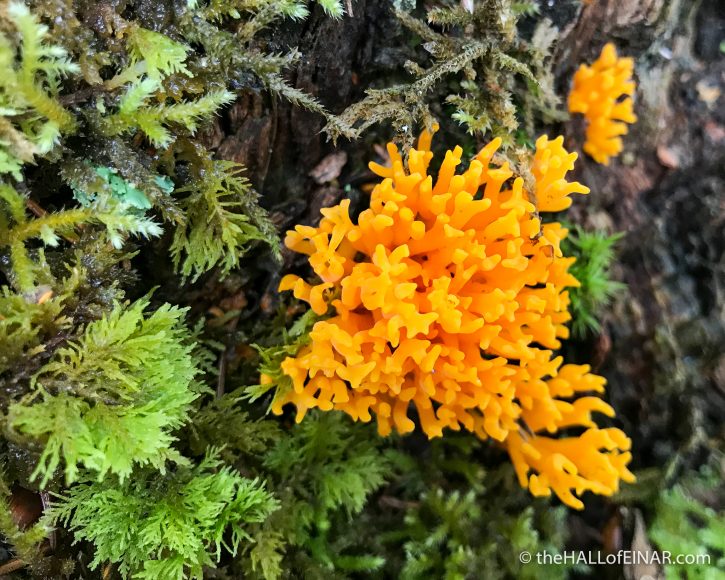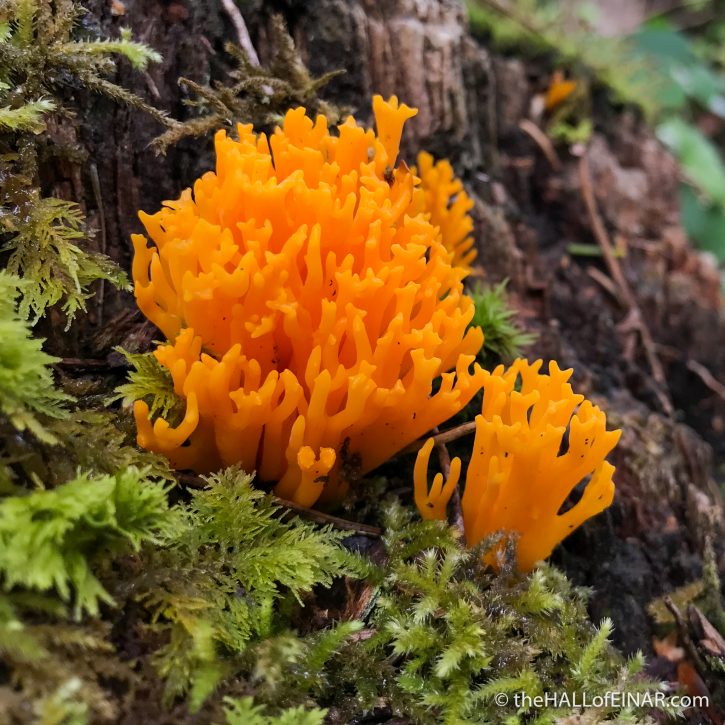The Yellow Stagshorn’s superpower
If coal is natural, why isn’t it still being produced now? How come we can burn coal and more isn’t being made naturally by plants and buried underground for us to use in millions of years? That’s a rhetorical question; we won’t be around in millions of years.
One reason is that plants took all that carbon out of the atmosphere, when it was hot and steamy in the Carboniferous and Permian periods. There aren’t great wetland coal forests now, partly because plants have far less carbon dioxide in the atmosphere to use than they used to. That means they grow much more slowly than the extreme profusion in the history of ancient life on Earth.
Another popular reason proposed for coal not being deposited now is that fungi evolved. Fungi have the superpower of breaking down the lignin in wood. Lignin is a vital part of the structure of plants which have a circulatory system; vascular plants. Without fungi, tree trunks would never rot; we would be living in a wooden world. Between a fifth and a third of the mass of dry wood is lignin. Lignin turns yellow on exposure to air, which means it has to be removed when making paper. That’s an expensive process, so the cheapest paper has the lignin left in it. That’s why newspapers go yellow with age.
Here’s a Yellow Stagshorn fungus. Yes, I know it’s orange but I didn’t name it.

It’s growing on a coniferous tree stump. It’s working its superpower to digest the lignin in the wood.
Here it is in the 1891 Atlas des champignons comestibles et vénéneux:

They coloured it orange as well.

We have a lot to thank fungi for, not just bread and beer.